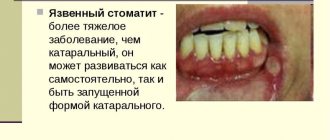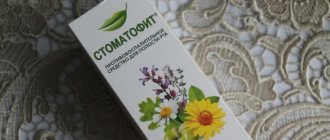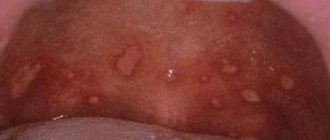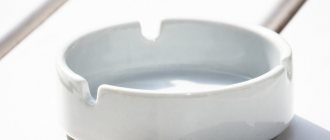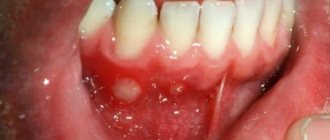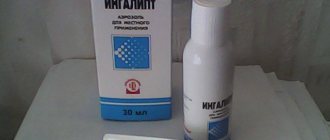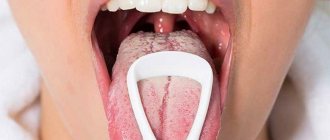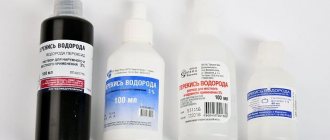Stomatitis is an inflammatory process on the mucous membranes of the oral cavity, causing visible damage. The disease develops due to the negative effects of pathogenic fungi, bacteria, viruses or allergic agents. Before treating stomatitis at home, it is necessary to determine its cause. Otherwise, the therapy will not bring the desired result or the disease will take a sluggish chronic form.
Only a doctor can determine the causative agent of stomatitis after deciphering the results of laboratory tests. After the diagnosis has been established and medications have been prescribed, treatment of the pathology is carried out in compliance with all medical recommendations.
Causes of the disease
Stomatitis is a disease of the oral mucosa, characterized by the appearance of ulcers of varying sizes. They can be single or multiple, depending on the type of disease. There are many reasons that can provoke the disease.
The most common are the following:
- Failure to comply with basic rules of oral hygiene.
- Using poor quality teeth cleaning products.
- Irritation of the oral mucosa with a toothbrush that is too hard.
- Eating spicy, salty and sour foods in large quantities.
- Poor quality dentures that injure the mucous membrane.
- Lack of vitamins and minerals in the body, chronic vitamin deficiency.
- Weakening of the immune system as a result of overwork, frequent stress and other factors.
- Taking potent medications from the group of antibiotics and cytostatics.
- Eating too cold and hot foods on a regular basis.
- Excessive use of rinsing products disrupts the microflora of the oral cavity.
- Infection of the body with helminths.
- The presence of a focus of purulent infection in the body, for example, chronic tonsillitis or sinusitis.
- Severe anemia, advanced diabetes mellitus.
At risk are patients infected with the AIDS virus, as well as patients who have recently suffered a severe and long-term illness. In addition, after tooth extraction, the risk of developing stomatitis increases several times.
Prevention of stomatitis: how to avoid trouble
The basis of prevention is personal hygiene and a healthy lifestyle. You also need to regularly visit the dentist, treat caries in a timely manner and monitor the condition of your dentures. Stomatitis often appears in children who do not yet know how to take care of themselves, and besides, their immunity has not yet been formed. This must be taken into account and maximum attention must be paid to their hygiene.
Stomatitis is not a complex, treatable disease that occurs under certain circumstances. If the disease bothers you too often, this may be a sign of hidden diseases of the gastrointestinal tract, endocrine or hematopoietic system. To exclude this, you need to undergo additional examination.
Add your recipes in the comments, they may help those people who are still struggling with this disease.
Classification of the disease
Stomatitis (treatment in adults often involves the use of drugs from different groups) can be accompanied by various clinical manifestations. That is why experts classify the condition into several varieties.
Aphthous stomatitis is considered the most common form. The disease is characterized by the appearance of a single small ulcer covered with a whitish coating. In this case, the lesion is localized on the inside of the lips or cheeks.
The viral type of disease is also called herpetic, since it becomes the result of activation of the herpes simplex virus in the body. In this case, small bubbles appear on the oral mucosa filled with a clear or cloudy liquid with a yellow tint. They quickly open up and erosions remain in their place.
Candidal stomatitis is considered quite common, as it develops as a result of long-term use of antibiotics and disruption of the oral microflora. If you examine the patient’s oral mucosa, you can see that there is a kind of curdled white coating on their surface. When it is removed, a reddened surface covered with erosions is revealed.
The bacterial form of the disease is also common. In most cases, it is provoked by microorganisms that enter the oral cavity when eating unwashed vegetables and fruits. The ulcers are small in size, usually multiple; when the surface layer is damaged, a wound surface remains at the site of the lesion.
Stomatitis can also be allergic. In this case, a kind of rash appears on the surface, which does not cause severe discomfort, but is often damaged, leaving miniature wounds in its place.
Any type of disease occurs in several stages, each of which has different clinical manifestations. At the initial stage, single or multiple erosions are formed, the appearance of which depends on the type of pathology. Other symptoms accompanying the disease appear.
At the progressive stage, damage to the ulcers occurs and symptoms worsen. In some cases, a bacterial infection occurs, which significantly worsens the course of the disease and can provoke serious complications.
The resolution stage is considered the final stage of disease progression. At this stage, the ulcers are covered with crusts, under which tissue regeneration proceeds quickly.
All symptoms gradually disappear, the patient's condition improves. Only in some cases, when infection or other complications occur at stage 2, healing is slow or a worsening of the condition is observed.
Stomatitis - treatment in adults and children
If we talk about drug treatment of stomatitis in adults, it should be clarified that there are several categories of drugs that, together, are effective against infection.
- Antiviral attack - Famciclovir (Famvir, Minaker), Valacyclovir (Valtrex, Valavir), MIRAMISTIN, VIFERON-gel, Acyclovir.
- Immunostimulants - AMIXIN 0.125, IMUDON, vitamins.
- Symptomatic drugs are antipyretics, but they should be used only at high temperatures.
- The fight against herpes rashes - products based on Famciclovir and Valacyclovir, for example, Acyclovir.
Let us remind you once again that taking medications must be approved by your doctor. Do not self-medicate.
Treatment of stomatitis in children is more complicated, since children are more sensitive to antibiotics and other drugs and in many cases their use is prohibited. Parents of a sick child should give him more drinks (water, fruit drinks, compotes). In order for a small patient to be able to eat, the oral cavity should be anesthetized. Teething products (Dentinox-gel or Kamistad) or other drugs containing choline salicylate or lidocaine can help with this.
At the same time, brush your baby’s teeth and rinse the mouth. Folk remedies will help with this, we’ll talk further.
Symptoms of pathology
Stomatitis (treatment in adults is often complicated by the addition of other symptoms) does not always provoke severe clinical manifestations, especially in adult patients. At the initial stage, the patient feels discomfort in the oral cavity, especially at the site of ulcer formation. Carrying out hygienic procedures becomes more complicated, the sensitivity of the mucous membrane of the cavity increases.
As the disease progresses, bad breath and bleeding gums appear when brushing your teeth or eating hard foods. The patient reports moderate to severe pain even when drinking water. Usually the pain is tolerable and occurs when the mucous membrane is damaged during eating.
After some time, the symptoms worsen if the patient does not consult a doctor. Possible increase in body temperature, weakness and loss of appetite. The patient tries to avoid eating and drinking, as these actions provoke pain.
With a long course of the disease, there is a decrease in body weight, worsening sleep, and the patient is unable to perform his duties. Typically, such manifestations are observed after the addition of complications. With a favorable course of the pathology, there are no systemic disorders.
How to treat fungal pathology
Fungal (candidal) stomatitis is most often diagnosed in young children, but also affects adults with low immunity. This form of the disease can be easily treated at home, especially if certain rules are followed.
Doctors recommend that patients exclude foods high in sugar from their diet. Any carbohydrates serve as a favorable environment for the proliferation of pathogenic yeasts.
Full recovery will occur in a week using the following medications:
- Clotrimazole solution and ointment;
- solution and ointment Candide.
For therapeutic rinses, you can use a 2% solution of boric acid or a 0.02% dilution of furatsilin. You should also treat the oral cavity with Chlorhexidine and infusions of medicinal herbs several times a day.
Diagnostics
The disease is quite easily diagnosed at the initial and progressive stages. To do this, the specialist uses several methods to help identify not only the degree of damage to the mucous membranes, but also the specific type of disease.
| Method | Description |
| General examination and questioning of the patient | The simplest and most accessible diagnostic method, which consists of listening to the patient’s complaints and identifying the probable cause of the disorder. Helps to immediately determine the type of disease and the extent of tissue damage. At the same time, not only the oral cavity is examined. But also the patient’s skin. |
| Clinical blood test | A standard technique aimed at assessing the general condition of the patient and identifying associated abnormalities. |
| Blood chemistry | An additional research method that often helps determine the cause of the disorder and detect complications from internal organs. |
| Oral swab | The result of the study helps the doctor see what type of microorganism caused the pathology if a bacterial type of stomatitis is suspected. |
| PCR method | The polymerase chain reaction technique allows you to confirm the presence of the herpes virus in the body, as it shows the antibodies formed in the body in response to this pathogen. In this case, the viral theory of the origin of stomatitis can be confirmed. |
Comprehensive diagnostics allows us to identify the extent of tissue damage and prescribe the most effective treatment.
How to quickly cure a viral disease
Herpetic stomatitis cannot be cured with home remedies. Pathology can be eliminated only with special antiviral ointments, gels, and, if necessary, tablets:
- Acyclovir cream and tablets (Zovirax);
- Tebrofen ointment;
- Interferon ointment;
- Oxolinic ointment;
- Viru-merz-serol ointment.
Viral stomatitis always develops against the background of a decrease in the body's resistance to infectious pathogens. Echinacea tincture, Immunal, Amiksin and vitamins with microelements - Vitrum, Supradin, Complivit, Centrum - will help increase immunity.
Treatment of the disease
Stomatitis (treatment in adults involves the use of several medications simultaneously) is treated with local and systemic agents, as well as antibiotics. However, the latter are used only for certain types of disease.
Local medications
When the first signs of stomatitis appear, it is recommended to use different groups of local remedies to eliminate ulcers and associated manifestations.
The most effective medications are considered to be:
- Antiseptics of natural origin, for example, Ingalipt, Chlorophyllipt. The products are available in the form of a spray and contain an extract from eucalyptus leaves. Thanks to this, there is a local antiseptic and anti-inflammatory effect, which allows you to quickly get rid of acute symptoms and prevent further progression of the disease. Sprays are prescribed to treat the oral cavity 2 to 5 times a day, the duration of the course is at least 7 days. If necessary, the course is extended to 2 weeks.
- Means to accelerate tissue regeneration (Solcoseryl) are usually available in the form of ointments or gels. They help quickly restore the mucous membrane, prevent an increase in the size of ulcers and the addition of a bacterial infection. The gel must be applied in a thin layer to the affected area 3 to 5 times a day. The duration of treatment is 7-14 days depending on the severity of the condition.
- Complex drugs with anti-inflammatory, antibacterial and regenerating properties , for example, Cholisal gel are considered the best for the treatment of aphthous, bacterial and allergic stomatitis. They help to reduce the number of lesions and prevent complications over the course of several days. The gel should be used at least 3 times a day, applied in a thin layer, and the procedure repeated for 10 days in a row. Instead of Cholisal, patients are often prescribed Kamistad gel, which additionally contains chamomile extract, which has a pronounced antiseptic property.
- Antiviral ointments (Acyclovir, Viferon) are prescribed when diagnosing advanced viral stomatitis. Without the use of such medications, it is impossible to achieve a pronounced therapeutic effect. Medicines are applied to the affected surface 2-3 times a day for 10 days. If necessary, the course can be extended to 2 weeks. The products are highly effective and rarely provoke negative reactions.
- Preparations containing iodine as an active ingredient. The most common remedy is Lugol's spray. It has a pronounced anti-inflammatory and antiseptic effect, which allows you to significantly reduce the number of ulcers or eliminate them altogether in 7-10 days. It is necessary to use the medication 2-3 times a day, irrigating the affected surfaces. It is important to consider that iodine often provokes allergic reactions and is contraindicated in patients with severe hyperthyroidism.
- Local anesthetics (Lidochlor, Lidocaine Asept) are available in the form of a spray, as well as a gel for external use. They help eliminate severe pain that often accompanies advanced forms of stomatitis of any type. For this purpose, the medicine is used for 5-7 days in a row, 2 to 4 times a day. It is necessary to treat the affected surface to eliminate severe discomfort. For some patients, even such medications do not completely relieve pain, but significantly alleviate the course of the disease.
- Antifungal ointments and gel (Nystatin, Miconazole) are used to detect severe fungal stomatitis. Prescribed in combination with systemic agents, they help to provide a local antimycotic effect. Experts recommend that patients treat the affected area with ointment 2 to 4 times a day, the course duration is 10 days.
- Glucocorticoids (Hydrocortisone ointment) are indicated in cases of advanced allergic stomatitis, when other medications do not alleviate the patient's condition. It is necessary to apply the products 2 times a day for 3-5 days. Usually such a short course is enough to achieve a therapeutic result.
Any of the remedies is used only after a comprehensive diagnostic examination. Self-medication can worsen the condition.
Systemic drugs
Stomatitis usually requires the use of topical agents for treatment. But in adults, the disease is often complicated, so the use of systemic drugs is necessary to achieve a pronounced therapeutic effect.
Nonsteroidal anti-inflammatory drugs (Ibuprofen, Nimesulide) are prescribed for fever and severe pain that is not relieved by local anesthetics.
The course of treatment is usually short and does not exceed 5 days. The patient should take 1-2 tablets daily before going to bed. Longer use is not recommended, since drugs in this group negatively affect the digestive system.
Antihistamines (Loratodine, Diazolin) are used to detect allergic stomatitis. They help relieve swelling of the mucous membrane and the discomfort that appears. You need to take 1 tablet 2 times a day throughout the entire course of treatment with local remedies, that is, 10-14 days. If necessary, the course can be extended after consulting a doctor.
Antiviral tablets (Isoprinosine, Groprinosin) are prescribed for viral stomatitis. They not only suppress the activity of the herpes virus in the body, but also stimulate the patient’s immune forces. After 10 days of regularly taking the tablets, an improvement in general condition is noted.
Even after stopping the course, the immune system independently fights various diseases for a long time. You need to take 2 tablets 3 times a day. The drugs are considered potent and are therefore prescribed only by a specialist.
Antifungal tablets (Clotrimazole, Metronidazole, Fluconaol) are prescribed to patients with candidal stomatitis. They help suppress fungal microflora in the body, which speeds up recovery and helps alleviate the general condition of the patient. You need to take 2 tablets per day for 10-14 days. The duration of the course depends on the degree of neglect of the condition.
Means for normalizing intestinal microflora (Linex, Bifiform) are necessary when using antibiotics, as well as when symptoms of candidal stomatitis are detected. You need to take 1 capsule 2 times a day for 7 days. Such medications allow you to avoid dysbacteriosis, which can worsen the patient’s condition.
Vitamin complexes (Complivit, Vitrum, Doppelgerz) are always used simultaneously with the main therapy or after the end of the course. Completing the deficiency of essential substances helps prevent the recurrence of the disease. The course must last at least 30 days. At this time, the patient takes 1 tablet or capsule per day.
Antibiotic therapy
Antibiotics are not used for all forms of the disease. Such medications are prescribed only for aphthous, bacterial and allergic stomatitis. The latter variety is included in the list only when severe, since otherwise antibiotics are not required, and the symptoms can be eliminated with the help of antihistamines and hormonal medications.
For any of these forms of pathology, it is allowed to use several groups of antibiotics:
- Macrolides (Azithromycin, Clarithromycin) are considered the most effective antibiotics today. They have pronounced antibacterial properties, quickly destroy pathogenic microflora and help speed up recovery. The daily requirement for a patient is usually 1 g. That is, he needs to take 2 tablets per day. The duration of the course does not exceed 5 days. It is not recommended to take potent drugs for longer, so as not to provoke complications.
- Penicillins (Amoxicillin, Augmentin) are also effective against many bacteria. Patients are prescribed a course of 7-10 days with the use of 2 tablets per day. Usually this time is enough to eliminate acute symptoms. Many patients develop allergies to this group of drugs, so they are not prescribed so often.
- Fluoroquinolones, for example, Ciprofloxacin is often used for stomatitis, because it has pronounced properties and helps to completely eliminate the signs of the disease in 1-2 weeks. The course lasts on average 10 days, the patient takes 2 tablets per day, which is equal to 1 g of medication.
Other groups of antibiotics are rarely used today because they do not have a strong effect, which prolongs treatment.
Folk remedies
Stomatitis (treatment in adults begins with a diagnostic examination) can be treated quite successfully using alternative medicine recipes. They do not have a negative effect on the mucous membranes and help to quickly cope with the disease.
An infusion based on chamomile is the most popular and effective home remedy with an antiseptic effect. It’s easy to prepare: for 300 ml of boiling water you will need 5 g of dry and pre-chopped herb, leave for at least 30 minutes.
After this, you need to filter the composition and rinse your mouth. Repeat the procedure 2-3 times a day, for each rinse prepare a new portion of the infusion. Continue treatment for at least 7 days in a row.
A solution with soda and salt is also considered a popular cure for stomatitis. It has anti-inflammatory and antiseptic effects. You can prepare the product from 1 tsp. soda and the same amount of salt, as well as 1 liter of boiled warm water. After dissolving the components, it is necessary to separate 200 ml of the composition and rinse the mouth. Carry out the manipulation 2 times a day for 10 days.
Aloe juice is a natural and effective remedy for stomatitis of any form. It is necessary to cut several leaves from a plant that is at least 3 years old, chop it and squeeze out the juice. Store the finished product in the refrigerator and treat inflammation areas 2-3 times daily. Continue treatment for 10 days.
Calendula decoction also helps relieve inflammation, pain and accelerates tissue healing. You need to take 20 g of dried flowers of the plant, add 1 liter of water and cook for 5 minutes. After this, leave the composition until it cools, filter and use for rinsing 3 times a day. The duration of the course is 5-8 days.
Sea buckthorn oil is considered the best natural remedy that has regenerating properties. It helps to quickly reduce the size of ulcers and gradually eliminates them completely.
You can purchase the product at the pharmacy and treat the affected areas 3 times a day using a cotton swab. It is also allowed to make compresses with oil if there are 1-2 areas of inflammation. To do this, moisten a cotton pad with oil and apply it to the hearth for 20-30 minutes. Repeat the manipulation daily for a week. Simple treatment is carried out for at least 10 consecutive days.
Any folk remedy can be used only after examination by a specialist.
Folk remedies for stomatitis
For stomatitis, you can rinse your mouth with decoctions or extracts of chamomile, sage, linden blossom, onion peels, carrot juice diluted with warm water, white cabbage or horseradish juice, kombucha infusion, etc.
You can also prepare ointments from garlic with milk (three drops per spoon), honey with olive oil, novocaine and protein (dissolve a spoonful of honey in a water bath, add a spoonful of oil, protein and 0.5% novocaine solution), grated potatoes with olive oil oil, crushed aloe with olive oil, burdock with hot sunflower oil (need to cool before use), etc.
But remember that traditional treatment will be much more effective if it is used together with traditional treatment prescribed by a doctor.
How to speed up recovery with diet therapy
During the treatment of stomatitis, it is necessary to follow a diet that will minimize the negative effects of foods on the mucous membrane.
The following products are prohibited:
- Spicy, salty, sour dishes.
- Smoked meats.
- Marinades and pickled vegetables, fruits.
- Carbonated and alcoholic drinks.
- Hard fruits, nuts.
- Fast food.
- Stale bread, crackers, dried fruits.
All dishes must be warm; it is prohibited to consume excessively hot and cold foods, as well as drinks.
Portions should be small. The menu during the treatment period should consist of soups, cereals and boiled meat. It is allowed to eat boiled fish, cottage cheese, and stewed vegetables. For drinks, you should give preference to warm herbal tea and compote. It is beneficial to consume dairy products in small quantities.
Stomatitis is a common dental disease that affects the mucous membranes of the oral cavity. Treatment of the disease involves the prescription of several drugs. In adults, the disease can be severe and provoke complications in the absence of timely treatment.
Article design: Vladimir the Great
What helps with aphthous pathology
Aphthous stomatitis can be cured only after its cause has been established. And this is quite difficult, since the mechanism of development of the disease is not fully understood. Most experts are inclined to believe that the pathology is of allergic origin, but there is also an opinion about viral etiology. The following medications are used in the treatment of aphthous stomatitis:
- antihistamines - Zirtec, Suprastin, Tavegil, Loratadine;
- for treating the oral cavity - Karotolin, Lugol spray, Tantum Verde solution and aerosol;
- antiviral - Zovirax, Acyclovir, Bonafton;
- antibacterial - Miramistin, Chlorhexidine, Iodinol;
- immunostimulants and vitamins – Centrum, Alphabet, Selmevit, Immunal, ginseng tincture.
Folk remedies are also effective in the treatment of aphthous pathology. Flower honey helps reduce the severity of inflammation and eliminate discomfort. You need to lubricate the mucous membranes of your mouth with it 2-3 times a day.
Diet for stomatitis
An adult with stomatitis is recommended to consume fermented milk products with a soft consistency without preservatives or additives, neutral vegetables and fruits rich in vitamins, and lean boiled meat. Low-fat broth is suitable as a first course. If stomatitis is caused by gastrointestinal diseases, it is useful to add cereal porridge to the diet. It is better to replace tea and coffee with plain water, compotes and decoctions. To avoid painful sensations, you should give preference to soft and warm foods. After a meal, it is recommended to rinse your mouth with clean water or a special solution.
Up to contents
Causes of aphthous stomatitis
Modern medicine has not been able to establish the exact cause of aphthous stomatitis, but it has been proven that aphthae occur most often under the following circumstances:
- In case of malfunction of general and local immunity;
- With exacerbation of certain chronic diseases: tonsillitis, sore throat, pharyngitis;
- In pathological processes in the gastrointestinal tract.
Relapses of the disease are often observed under the active influence of such external factors as: stress, depression, bad habits, professional activities that negatively affect human health.
Nystatin ointment
Nystatin ointment is used for fungal stomatitis in the mouth. This is a drug based on a polyene antibiotic. Effective against fungi of the genus Candida.
The medication is applied twice a day in a thin layer to areas of erosion and ulceration. On average, the course of treatment lasts 7–10 days. However, according to indications, it can be extended to 4 weeks.
It is prohibited to prescribe Nystatin:
- children under 1 year old;
- during pregnancy;
- for allergies to the composition of the ointment, ulcers, liver failure.
Important! Nystatin is safe if swallowed. It is not absorbed and is excreted unchanged along with feces.
Used in the treatment of fungal stomatitis.
The medicine is cheap. You can buy it for 40 – 60 rubles.
"Acyclovir"
Another drug prescribed for the treatment of herpetic stomatitis. Effective against herpes viruses, chickenpox, shingles, Epstein-Barr and cytomegalovirus. Penetrates the cells of pathogenic cells and destroys them by blocking the synthesis of the DNA chain.
For stomatitis, the ointment should be applied in a thin layer to the affected areas twice a day. The course of treatment is at least 5, maximum 10 days.
Additional Information! The effect of the medication can be enhanced if you take immunostimulating drugs at the same time. To achieve maximum results, treatment should begin as early as possible.
Effective in the treatment of herpetic stomatitis.
Acyclovir should not be prescribed during pregnancy, lactation, or if you are allergic to any of the components. Possible rashes, itching, burning, swelling.
Free consultation on the cost of treatment in our dentistry
Leave a request and the clinic administrator will contact you within 15 minutes!
The cause of herpetic stomatitis can be not only a malfunction of the body’s general immunity, but also a deterioration of local immunity, in which the oral mucosa becomes sensitive to the effects of pathogenic microflora. Local immunity is reduced under the following circumstances:
- With poor oral hygiene, due to which hard and soft plaque begins to accumulate on dental surfaces and soft tissues;
- For untreated dental diseases;
- For tonsil infection;
- When you inhale air not through your nose, but through your mouth. It leads to dehydration of the mucous membrane, which is harmful because bacteria will penetrate the tissue more easily and quickly. Treatment methods
Since this form of stomatitis is caused by the herpes virus, the basis of treatment for the disease should be special antiviral drugs. However, these remedies show the greatest effectiveness in the initial stages of the development of the disease, until the blisters turn into ulcers. In the later phases of development, treatment with antiviral drugs will be ineffective.
"Solcoseryl"
The main purpose of Solcoseryl is to accelerate regenerative processes. He is capable of:
- activate cell division and growth;
- normalize oxygen supply to tissues and cellular respiration;
- restore blood supply;
- improve oxygen transport to cells;
- accelerate the restoration of mucous membranes and skin.
Important! "Solcoseryl" is available in 3 forms: gel, cream and dental paste. The last two are recommended for use in the treatment of stomatitis, since the gel does not contain fat and is easily washed off with saliva. It is advisable to first brush your teeth and rinse your mouth with a disinfectant solution.
Solcoseryl is used as follows:
- dry the mucous membrane with a sponge;
- apply a strip of paste 0.5 cm thick to the affected surface;
- The product is lightly moistened with a damp cotton swab without rubbing.
Stimulates the restoration of mucous membranes and skin.
You should use the paste every time after meals and before bed until symptoms disappear. It is advisable not to eat or drink for half an hour after application. The product forms a protective shell on the surface of the mucosa, which lasts 3 to 5 hours.
The paste should not be prescribed to pregnant women, nursing mothers and children under 18 years of age. The cost ranges from 370 to 450 rubles.
